When’s Boise’s next solar eclipse? Will you have to travel for the next one? What to know
Put away your eclipse glasses, Idahoans. Unless you plan on traveling out of the United States, you won’t need them for a while.
Over the past seven years, Boise has witnessed three distinct solar eclipse events — a total solar eclipse in 2017 passed just north of the city, an annular solar eclipse last October, and Monday’s partial solar eclipse.
It will be approximately five years before Boise witnesses another partial solar eclipse, 21 years until the next annular eclipse, and a staggering 145 years until the next total solar eclipse passes over the City of Trees. All timelines are according to Time and Date.
Of course, that doesn’t mean you can’t go elsewhere to see a solar eclipse.
Here’s what to know about the future of solar eclipses in Boise, nationwide and worldwide.
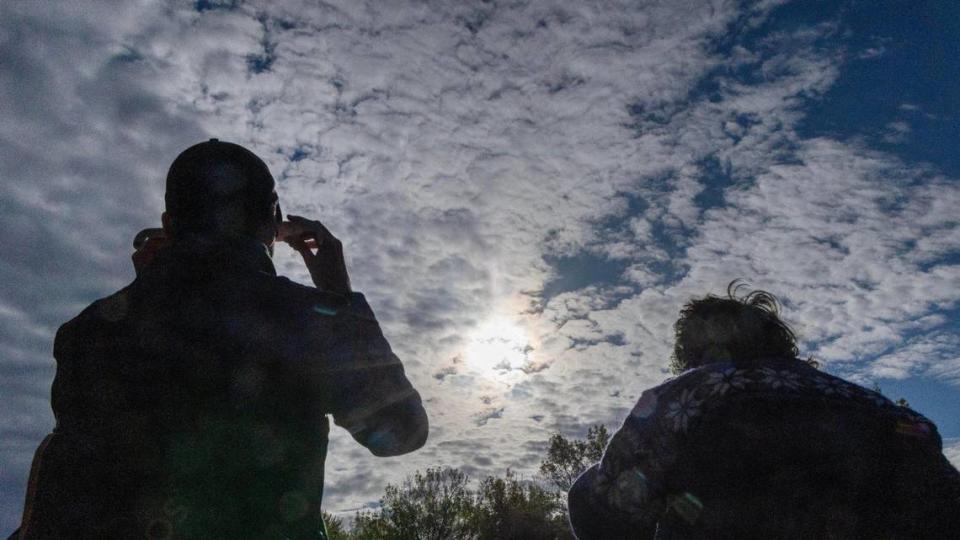
How are solar and lunar eclipses forecast?
Astronomers and mathematicians can predict the schedule of solar and lunar eclipses hundreds of years into the future because of something called the Saros Series, according to NASA.
A Saros Series is a period of 223 lunar months. In a Saros Series, precisely 9 years and 5.5 days after a lunar eclipse occurs, a solar eclipse will happen, and vice versa. Also, about 18 years and 11 days after an eclipse, the sun, Earth and moon will return to about the same relative positions, and a near-identical eclipse will occur.
“Current eclipse forecasts are accurate to less than a minute in time over a span of hundreds of years,” according to NASA.
When will Boise next witness a solar eclipse?
There are three main different types of solar eclipses that Boise residents will see in the near-to-distant future. Here’s a quick rundown of each:
Partial eclipse - When the moon moves between the sun and the earth, but from your point of view on the earth, the moon doesn’t align perfectly with the sun. This results in only part of the sun being eclipsed, as Boise saw this past week.
Total eclipse - When the moon moves between the sun and the earth and completely blocks the face of the sun. Those in the center of the moon’s shadow will witness complete totality.
Annular eclipse - When the moon passes between the sun and the earth at its furthest point from Earth, the moon fails to block the entire face of the sun, creating a “ring of fire” around the moon.
The next solar eclipse visible from Boise will be a partial eclipse on Jan. 14, 2029, which will be visible to most of North and Central America. At the eclipse’s peak, Boise will see 68% of the sun eclipsed, almost double compared to the 35% obscured on Monday.
Boise’s next annular eclipse will be on Feb. 5, 2046 — just under 22 years from now. The eclipse begins north of Australia in West Papua before traveling across the Pacific Ocean and ending in Idaho. Idahoans are some of the final people who’ll glimpse the eclipse at 5:54 p.m.
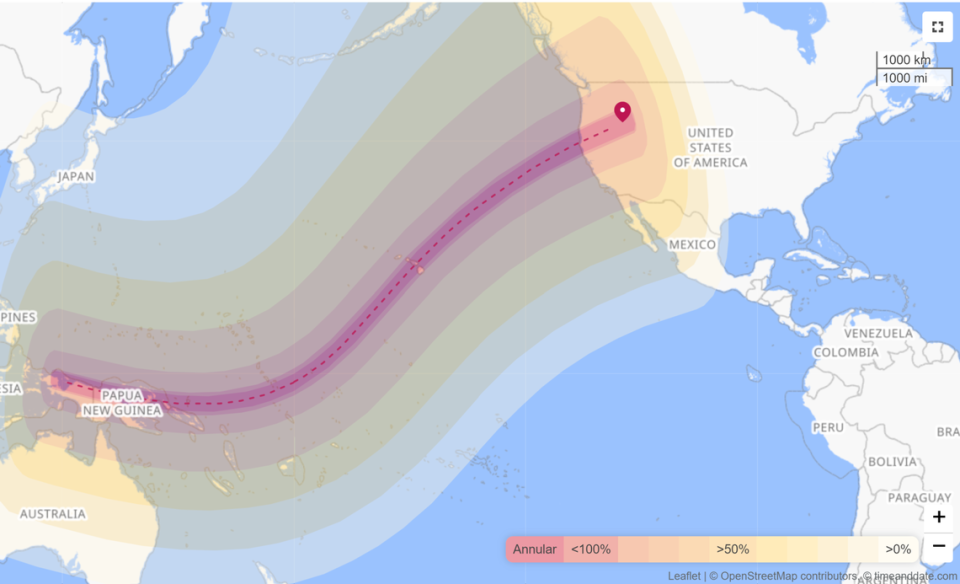
How about a total solar eclipse in Boise? There’s probably a good chance none of us will be alive for it.
The next total solar eclipse in Boise will occur on June 15, 2196 — 145 years from now. The long-tracking eclipse begins in Asia, tracks across the northern Pacific Ocean, and dips back into the United States.
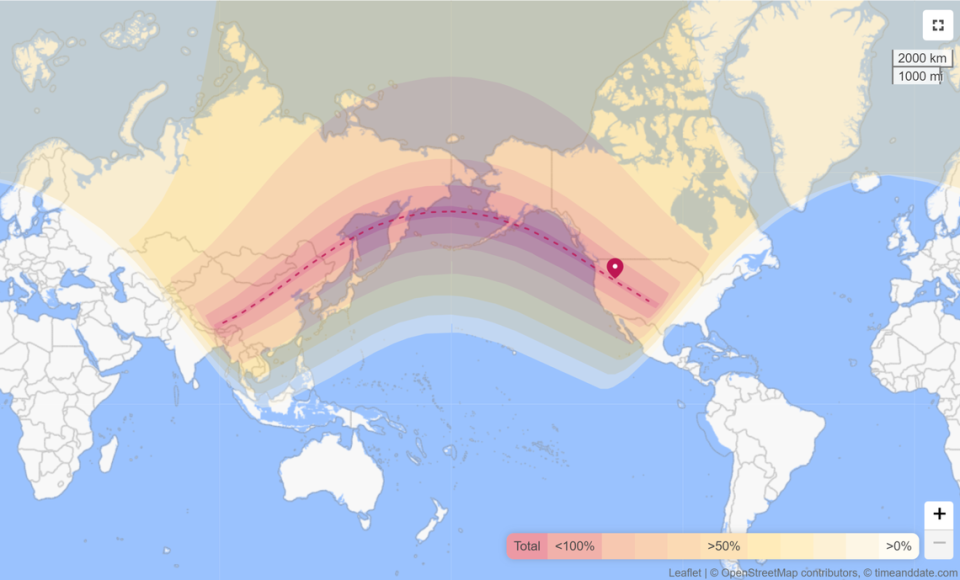
What about total solar eclipses elsewhere?
Now that it’s been determined you (likely) won’t be alive for the next total solar eclipse in Boise, where can you see one soon?
Earth is set for two more total solar eclipses by the end of the decade, but the path of totality won’t pass through the Americas.
The first will occur on Aug. 12, 2026, originating in the Arctic Circle and dipping down into Europe. Spain is the only country to enjoy totality, including cities such as Bilbao, Valladolid and areas north of Madrid.
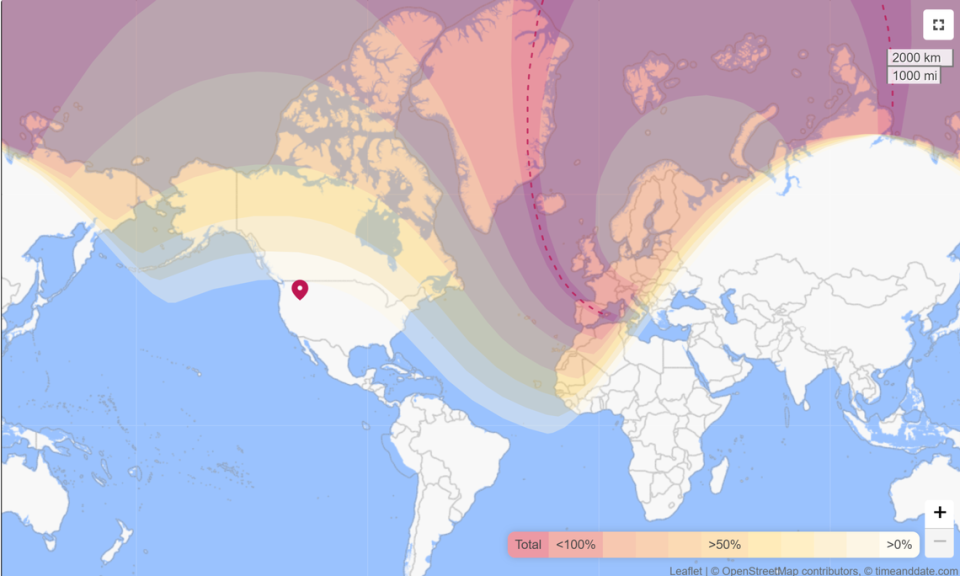
Another total solar eclipse will pass through northern Africa and the Arabian Peninsula on Aug. 2, 2027, while a partial eclipse will be visible throughout much of Europe. Eclipse-chasers will have multiple choices to view totality, including Tunisia, Egypt and Saudi Arabia.
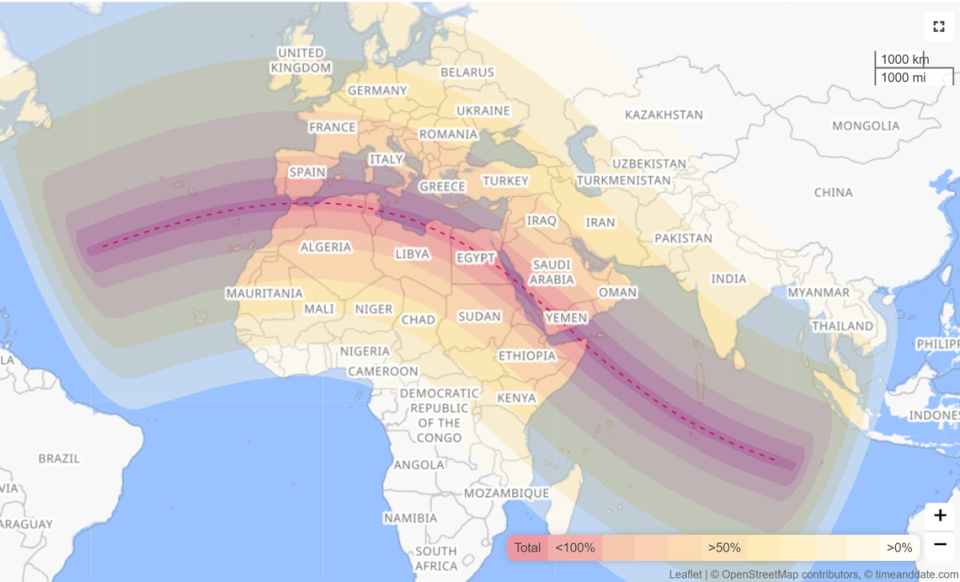
What about the next total solar eclipse on American soil?
Although the 2026 and 2027 total solar eclipses will be viewable as a partial eclipse in northeastern portions of the U.S., the next time a path of totality will touch American soil is March 30, 2033 in the western-most reaches of Alaska.
The next path of totality to pass through the lower 48 will occur on Aug. 22, 2044, and be viewable in Montana and North Dakota.


